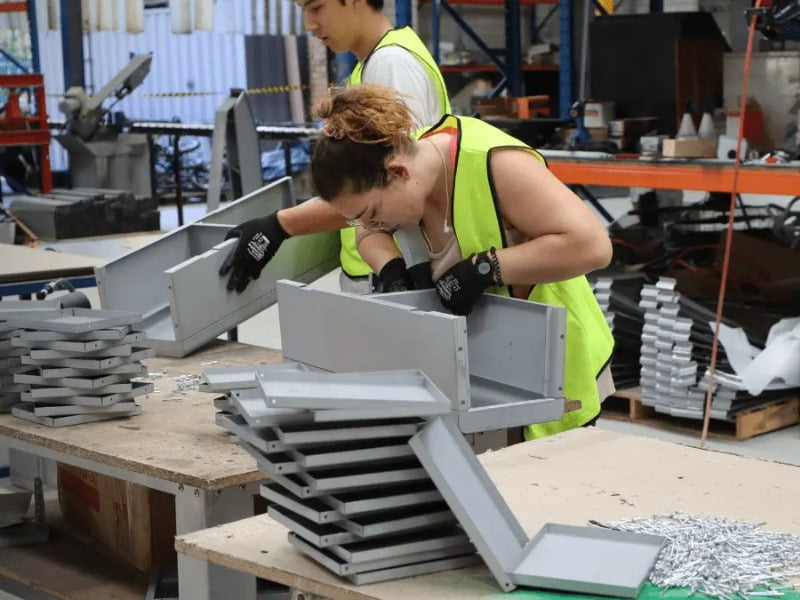Nearly 250 manufacturers collapsed amid sustained high inflation and higher borrowing costs over the past six months, new data from Australia’s corporate watchdog shows.
The increase in insolvencies comes as businesses wait for support from the Albanese government’s $15 billion flagship industry program to start flowing.
Data from the Australian Securities and Investments Commission, released on Tuesday, shows 243 manufacturing firms called in external administrators in the first half of the financial year, compared with 237 and 85 during the same period in 2022-23 and 2021-22.
It is the highest number of manufacturing insolvencies in a six-month period since July to December 2013, when 260 firms went under for the first time.
Since then however, the number of manufacturing firms has grown by 5.9 per cent to 90,174, according to the Australian Bureau of Statistics.

Manufacturing insolvencies for the full financial year hit 458 in 2022-23, up from 181 in 2021-22.
The number of businesses entering administration across the economy fell to record lows during the COVID-19 pandemic amid low interest rates and a government response that included payments and effectively introduce a moratorium on insolvency trading laws.
The new data has shadow industry minister Sussan Ley worried at a time when the first loans, equity investments and guarantees through the National Reconstruction Fund (NRF) are yet to be made.
“Labor bet the house on the NRF and contrary to the Prime Minister’s misleading statements this week, it is not ‘open for business’ and is not delivering any support,” Ms Ley said.
“The NRF is the wrong policy at the wrong time, struggling Aussie manufacturers don’t need Anthony Albanese as a business partner, they need cheaper power bills, less red tape, and their government to deliver an economic plan.”
As reported by InnovationAus.com, around 300 applications have been received by the NRF Corporation, despite it having no formal investment application process.
On Wednesday, Prime Minister Anthony Albanese reiterated that the NRF is “up and running” and lampooned the Coalition for not offering an “online form that you can fill in”.
Since the NRF passed through parliament at the end of March 2023, the government has appointed a board and developed an investment mandate. In November, when the mandate was announced, Mr Albanese declared the fund “open for business”.
“This isn’t an online form process as if you were applying for a packet of chips from the supermarket. This is a process in which over 160 companies have already engaged with the National Reconstruction Fund about the processes for funding,” the Prime Minister said.
A hunt for a NRF chief executive is still ongoing, with the statutory deadline for appointment set for March — six months after the legislation came into effect last September.
As of January 3, the Department of Industry, Science and Resource’s general manager for NRF strategy, Rebecca Manen, is acting in the chief executive role.
Do you know more? Contact James Riley via Email.

